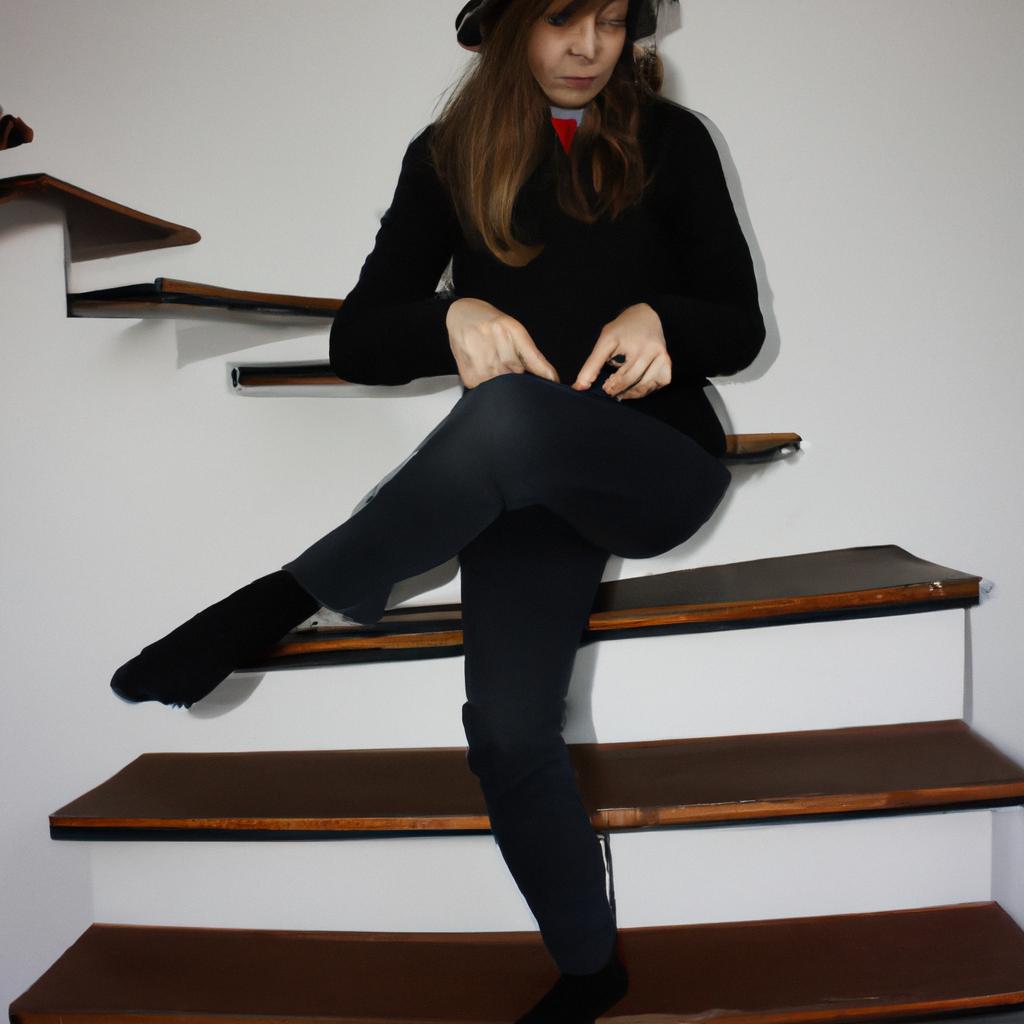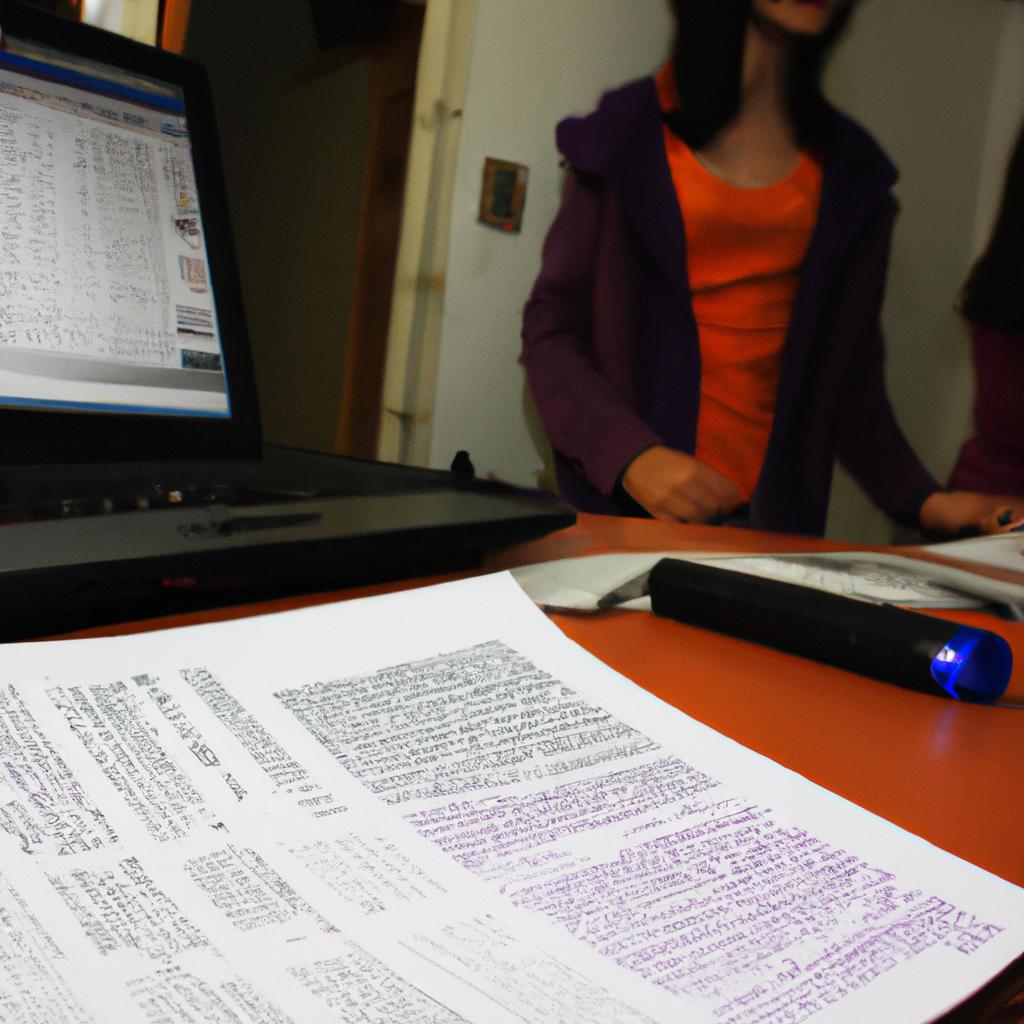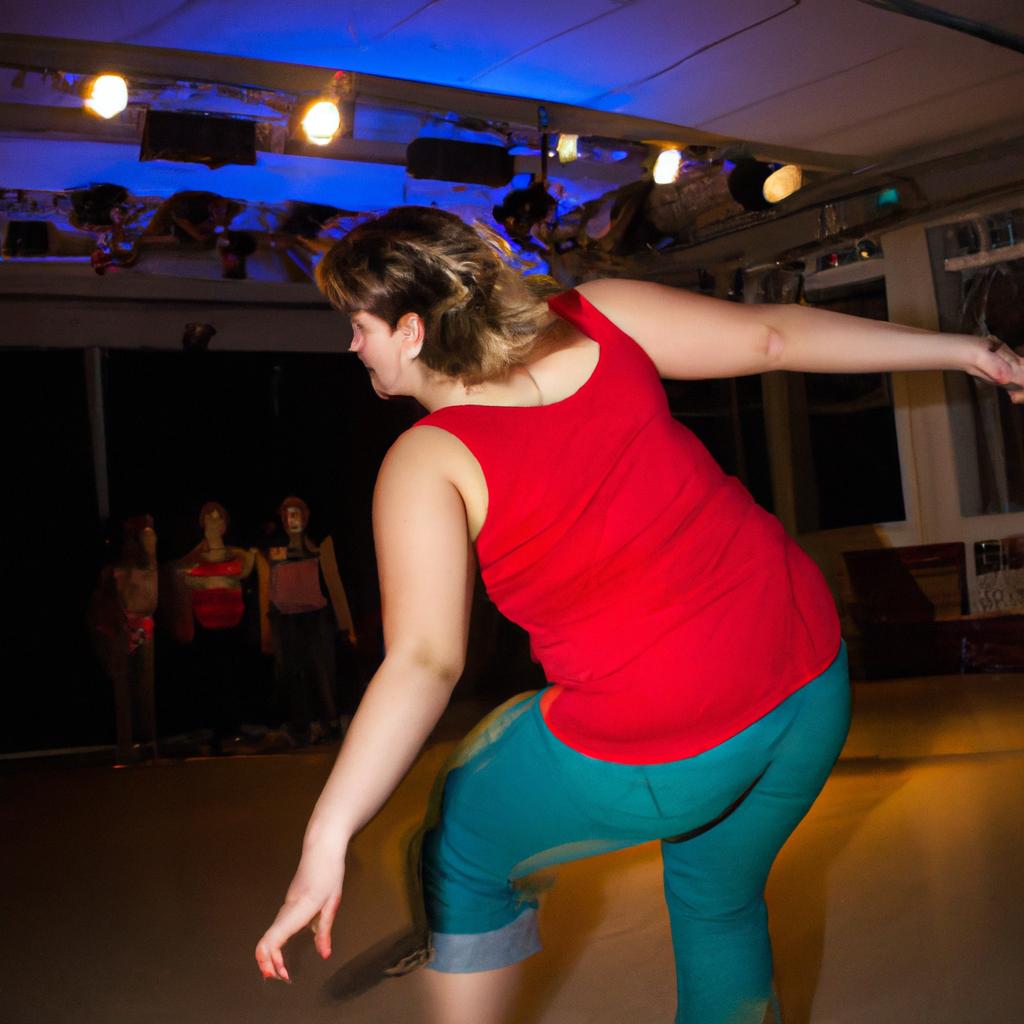Character Development: Theater Actress: Techniques for Authentic Portrayals

The art of theater demands more than just the ability to memorize lines and deliver them on stage. It requires actors to dive deep into their characters and bring them to life in a way that is authentic and captivating for audiences. One actress, let’s call her Sarah, faced this challenge head-on when she was cast as Lady Macbeth in a local production of Shakespeare’s renowned tragedy, Macbeth. In order to portray the complexity of this character with conviction, Sarah had to employ various techniques for character development.
Character development in theater is an intricate process that involves understanding the nuances and motivations of a character from different perspectives. To achieve authenticity in their portrayal, actors often use a combination of physicality exercises, emotional exploration, and extensive research. For instance, Sarah began by studying the historical context of the play and delving into Lady Macbeth’s role within society during that time period. This allowed her to grasp the societal pressures and expectations placed upon women like Lady Macbeth, which influenced her actions throughout the play. Additionally, Sarah engaged in movement workshops to explore how Lady Macbeth would carry herself physically – capturing both her power-hungry ambition and inner turmoil through deliberate gestures and postures on stage.
By employing these techniques for character development, theater actors are able to bring depth and authenticity to their performances. They can channel the emotions and motivations of their characters, allowing audiences to connect with the story on a deeper level. Through extensive research, physicality exercises, and emotional exploration, actors like Sarah can fully understand the complexities of their characters and portray them with conviction. This not only enhances the overall theatrical experience but also showcases the artistry and skill of the actor.
Understanding the character’s background
To truly bring a theater character to life, it is essential for an actress to delve into the depths of their persona and understand their unique background. By comprehending the intricacies of a character’s upbringing, experiences, and social environment, an actress can authentically portray them on stage. For instance, let us consider the case study of Emily in “Our Town,” who grew up in a small New England town during the early 20th century.
Firstly, exploring the character’s family dynamics provides valuable insights into their behavior and motivations. In Emily’s case, she comes from a close-knit family where traditions are deeply cherished. This knowledge allows the actress to accurately depict her strong sense of loyalty and attachment to her roots. Moreover, understanding that Emily was raised with conservative values helps shape her interactions with other characters throughout the play.
Secondly, examining significant events or traumas that have shaped the character’s past adds depth and complexity to their portrayal. In Emily’s story, losing her younger brother at a young age profoundly impacts her perspective on life and death. This tragic experience influences her actions later in the play when she yearns to relive moments from her own life after passing away.
To further evoke an emotional response in the audience:
- The isolation Emily feels as a result of growing up in such a tight-knit community
- The bittersweet nostalgia associated with reminiscing about one’s childhood
- The fear and uncertainty surrounding mortality
- The universal desire for purpose and meaning in life
In addition to these narrative elements, using visual aids like tables can help create stronger connections between an actress and her character. Here is an example table showcasing key aspects of Emily’s background:
| Aspect | Description |
|---|---|
| Family Dynamics | Close-knit; traditional values |
| Traumatic Event | Loss of younger brother |
| Community | Small New England town |
| Time Period | Early 20th century |
In conclusion, by gaining a deep understanding of a character’s background, an actress can authentically portray their persona on stage. Analyzing aspects such as family dynamics, significant events, and the social environment allows for a more nuanced portrayal that resonates with both the performer and the audience. With this foundation, we can now move forward to analyze the character’s motivations in order to fully grasp their essence and bring them to life on stage.
Analyzing the character’s motivations
Having understood the background of a theater character, it is crucial to delve into their motivations. By analyzing what drives a character’s actions and decisions, an actor can bring authenticity to their portrayal on stage. For instance, let us consider the character of Ophelia from Shakespeare’s Hamlet.
Ophelia, a young woman caught in the midst of political intrigue and personal turmoil, exhibits complex motivations throughout the play. To analyze her motivations effectively, actors often employ various techniques such as:
-
Textual analysis: Scrutinizing Ophelia’s dialogue and interactions with other characters provides valuable insights into her thoughts and desires. By closely examining her words and subtext, an actor can unravel hidden motives that may not be explicitly stated.
-
Psychological exploration: Delving into Ophelia’s psyche allows actors to understand her emotional state and underlying conflicts. Exploring possible traumas or past experiences helps create a multi-dimensional portrayal that resonates with audiences.
-
Empathy exercises: Connecting with the character emotionally enables actors to empathize with their struggles and aspirations. Through exercises like role-playing or journaling from Ophelia’s perspective, performers develop a deeper understanding of her unique viewpoint.
-
Ensemble work: Collaborating with fellow actors and directors fosters a holistic approach towards understanding motivations within the larger context of the production. Engaging in ensemble discussions encourages different interpretations and enriches character development.
To further illustrate this point, here is an example table showcasing potential motivations for Ophelia:
| Motivation | Example |
|---|---|
| Desire for love | Longs for affection from Hamlet |
| Familial expectations | Feels obligated to follow Polonius’ orders |
| Emotional instability | Struggles with grief after father’s death |
| Internal conflict | Torn between loyalty to family and Hamlet |
By employing these techniques and considering a character’s motivations, theater actors can create authentic portrayals that resonate with audiences on a profound level. Understanding what drives a character allows performers to make informed choices about their actions, reactions, and overall behavior.
Transitioning into the subsequent section of “Researching the time period and setting,” it is crucial for actors to delve further into understanding the context in which their characters exist. By exploring the historical backdrop and societal norms of the play, performers gain valuable insights that inform their interpretation without relying solely on personal assumptions or contemporary perspectives.
Researching the time period and setting
Building on the analysis of a character’s motivations, the next crucial step in developing an authentic portrayal as a theater actress is to thoroughly research the time period and setting. By immersing oneself in historical context, understanding societal norms, and studying cultural nuances, actors can bring depth and authenticity to their performances. Let us explore how this process contributes to creating compelling characters on stage.
One example that highlights the significance of researching the time period and setting is when portraying a character from William Shakespeare’s play “Romeo and Juliet.” To accurately depict the world of Verona during the Renaissance era, an actor needs to delve into various aspects such as language, social hierarchy, fashion, and customs. This knowledge allows them to embody their character with precision while evoking emotions that resonate with both contemporary and traditional audiences.
To fully immerse themselves in a specific time period or setting, actors employ several techniques:
- Archival Research: Delving into primary sources like letters, diaries, newspapers, or historical records provides valuable insights into daily life experiences.
- Visual Exploration: Studying paintings, photographs, or sketches from relevant eras aids in understanding visual aesthetics and helps recreate accurate physical appearances.
- Expert Interviews: Engaging with historians or experts knowledgeable about the time period adds depth by offering contextual information not readily available through other means.
- Site Visits: Physically visiting locations associated with the play’s setting can provide invaluable inspiration for capturing its atmosphere and essence.
Table Markdown Format:
| Techniques for Researching | Benefits |
|---|---|
| Archival Research | Insights into daily life experiences |
| Visual Exploration | Understanding visual aesthetics |
| Expert Interviews | Contextual information |
| Site Visits | Inspiration for capturing atmosphere |
By employing these techniques and engaging with extensive research methods tailored to each production’s requirements, theater actresses deepen their understanding of the world their characters inhabit. This knowledge enables them to create multi-dimensional performances that resonate with audiences and breathe life into the characters they portray.
Exploring the character’s relationships is another pivotal aspect of character development, as it allows actors to understand their dynamics within the story. Through examining interactions with other characters, an actress gains insight into her own character’s motivations, reactions, and growth on stage. Let us delve into this crucial process in our next section.
Exploring the character’s relationships
Having thoroughly researched the time period and setting, an actress must now delve into exploring the intricate web of relationships that shape her character. By understanding how these connections influence her character’s motivations and behaviors, she can create a more authentic portrayal on stage.
Paragraph 1:
To illustrate this point, let us consider the case of Emily, a theater actress preparing for a role in a historical drama set during World War II. As part of her exploration of the character’s relationships, Emily delves deep into researching the familial bonds that existed during this tumultuous time. She examines letters exchanged between soldiers and their loved ones back home, studies photographs capturing tender moments between couples separated by war, and immerses herself in personal accounts of individuals who experienced firsthand the strain placed on relationships during those challenging years. This research not only enriches Emily’s understanding of the characters’ emotional landscapes but also provides valuable insights into realistic portrayals of love, loss, longing, and resilience within wartime contexts.
- Uncover primary sources such as diaries or journals to gain insight into intimate thoughts and feelings.
- Analyze historical records to understand societal norms and expectations surrounding various types of relationships.
- Seek out experts or historians who specialize in the time period to gather additional information about social dynamics.
- Engage in discussions with fellow actors playing interconnected roles to develop a shared understanding of each relationship dynamic.
Paragraph 2 (Table):
The following table offers an overview of some potential relationship dynamics an actress may encounter while developing her character:
| Relationship | Description | Key Characteristics |
|---|---|---|
| Romantic | Love interest or partner | Passionate, affectionate |
| Familial | Family members | Supportive, loyal |
| Friendship | Close friends | Trustworthy, reliable |
| Professional | Colleagues or mentors within the context of the play | Competitive, collaborative |
Paragraph 3:
By exploring and understanding these various relationship dynamics, an actress gains valuable insights into her character’s emotional journey. Through careful analysis of primary sources, examination of societal norms, engagement with experts, and collaboration with fellow actors, she can authentically portray the complexities that arise from love, loyalty, friendship, and professional interactions in a given time period.
Developing physicality and mannerisms plays a crucial role in bringing a character to life on stage. Understanding how relationships shape behavior serves as a foundation for embodying the character physically and capturing their unique essence without explicitly following predefined steps.
Developing physicality and mannerisms
Section H2: Developing Physicality and Mannerisms
Transitioning from the exploration of a character’s relationships, an actor must also focus on developing the physicality and mannerisms that will bring authenticity to their portrayal. By understanding how a character moves, gestures, and presents themselves physically, actors can enhance their performances and create more compelling characters on stage.
For instance, let us consider the case study of a theater actress preparing for the role of Lady Macbeth in Shakespeare’s play “Macbeth.” To accurately portray this complex character, the actress pays close attention to her physicality. She studies historical references and seeks inspiration from powerful female figures to develop Lady Macbeth’s posture, gait, and facial expressions. This meticulous attention to detail allows her to embody the essence of Lady Macbeth with conviction.
Developing physicality and mannerisms requires careful observation and practice. Here are some techniques that actors employ:
- Body Language: Actors analyze how their character might stand or sit based on their personality traits or emotional state.
- Gestures: Understanding the appropriate use of hand movements and body language can add depth to a performance.
- Vocal Variation: Adjusting tone, pitch, volume, and pace helps convey a character’s emotions effectively.
- Costume Analysis: The choice of clothing influences movement patterns and informs an actor about the character’s social status or profession.
To further illustrate these techniques, we present a table comparing two different characters’ physicality:
| Character | Physical Traits | Mannerisms |
|---|---|---|
| Sherlock Holmes | Tall stature | Observant gaze |
| Precise movements | Fidgets when bored | |
| Confident posture | Taps fingers while thinking | |
| Alice | Petite figure | Graceful hand gestures |
| Quick steps | Plays with hair when nervous | |
| Shy demeanor | Avoids direct eye contact |
In conclusion, developing physicality and mannerisms is crucial for an actress to create authentic performances. By carefully considering a character’s unique physical attributes and mannerisms, actors can bring their characters to life on stage. Next, we will explore the importance of practicing emotional range and vulnerability.
Building upon the foundation of understanding a character’s relationships and developing their physicality and mannerisms, theater actors must now delve into practicing emotional range and vulnerability in order to truly captivate audiences.
Practicing emotional range and vulnerability
Developing physicality and mannerisms is a crucial aspect of character development for theater actresses. By carefully crafting the way they move, gesture, and hold themselves on stage, actors can bring credibility and depth to their performances. This section explores some techniques that help in creating authentic portrayals through physicality.
One effective technique is observational research, where actresses observe real-life individuals or study specific archetypes to understand how different people carry themselves physically. For example, let’s consider an actress preparing for the role of a 1920s flapper. She might watch films from that era, closely observing the body language, postures, and gestures exhibited by flappers during that time period. By immersing herself in this research process, she can internalize these movements and incorporate them naturally into her performance.
Another strategy involves experimenting with various physical exercises and warm-ups to develop flexibility and control over one’s body. These exercises could include yoga poses, dance routines, or even clowning techniques that encourage performers to explore unique ways of moving. By pushing beyond their comfort zones and challenging their bodies’ limitations, actresses can discover new possibilities for embodying characters physically.
To further enhance their understanding of physicality in acting, theater actresses often engage in collaborative workshops or classes specifically focused on movement training. These sessions provide opportunities to explore different styles such as Laban Movement Analysis or Viewpoints Technique. Through guided exercises and improvisation tasks within these frameworks, actresses can deepen their awareness of how movement choices affect characterization.
In summary:
- Observational research helps actresses gain insights into specific physical traits associated with certain characters or eras.
- Physical exercises and warm-ups enable actresses to expand their range of movements and increase bodily control.
- Collaborative workshops or classes centered around movement training offer valuable exploration opportunities for refining physicality skills.
By using these techniques as part of character development, theater actresses can create more authentic portrayals by effectively incorporating physicality into their performances.






